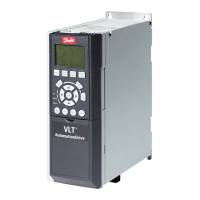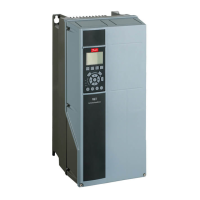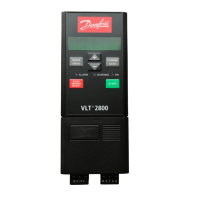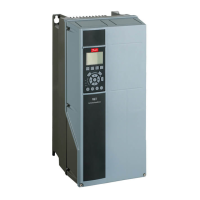3.3 Derating
Consider derating when any of the following conditions
are present.
•
Operating above 1000 m (low air pressure)
•
High ambient temperature
•
Insucient cooling
•
High switching frequency
•
Low-speed operation
•
Long motor cables
•
Cables with a large cross-section
3.4 Operating Environment
For specications regarding ambient conditions, see
chapter 5 Specications.
NOTICE
CONDENSATION
Moisture can condense on the electronic components
and cause short circuits. Avoid installation in areas
subject to frost. Install an enclosure heater when the
VLT
®
Plus Panel is colder than the ambient air. Operating
in stand-by mode reduces the risk of condensation as
long as the power dissipation keeps the circuitry free of
moisture.
NOTICE
EXTREME AMBIENT CONDITIONS
Extremely hot or cold temperatures compromise unit
performance and longevity.
•
Do not operate in environments where the
ambient temperature exceeds 30 °C (86 °F).
•
Extra air conditioning of the enclosure or instal-
lation site can be required.
3.4.1 Gases
Aggressive gases, such as hydrogen sulphide, chlorine, or
ammonia can damage the electrical and mechanical
components.
3.4.2 Dust
When installing the VLT
®
Plus Panel in dusty environments,
pay attention to the following:
Periodic maintenance
When dust accumulates on electronic components, it acts
as a layer of insulation. This layer reduces the cooling
capacity of the components, and the components become
warmer. The hotter environment decreases the life of the
electronic components.
Keep the heat sink and fans free from dust build-up.
Cooling fans
Fans provide airow to cool the VLT
®
Plus Panel. When
fans are exposed to dusty environments, the dust can
damage the fan bearings and cause premature fan failure.
3.4.3 Potentially Explosive Atmospheres
WARNING
EXPLOSIVE ATMOSPHERE!
Do not install a VLT
®
Plus Panel in a potentially explosive
atmosphere. Install the unit in a cabinet outside of this
area. Failure to follow this guideline increases risk of
death or serious injury.
Systems operated in potentially explosive atmospheres
must full special conditions. EU Directive 94/9/EC (ATEX
95) classies the operation of electronic devices in
potentially explosive atmospheres.
•
Class d species that if a spark occurs, it is
contained in a protected area.
•
Class e prohibits any occurrence of a spark.
Motors with class d protection
Does not require approval. Special wiring and containment
are required.
Motors with class e protection
When combined with an ATEX approved PTC monitoring
device like the VLT
®
PTC Thermistor Card MCB 112, instal-
lation does not need an individual approval from an
approbated organisation.
Motors with class d/e protection
The motor itself has an e ignition protection class, while
the motor cabling and connection environment comply
with the d classication. Use a sine-wave lter at the active
front-end drive output to attenuate the high peak voltage.
NOTICE
MOTOR THERMISTOR SENSOR MONITORING
VLT
®
AutomationDrive units with the option are PTB-
certied for potentially explosive atmospheres.
Mechanical Installation
VLT
®
Plus Panel
12 Danfoss A/S © 09/2015 All rights reserved. MG13B102
33
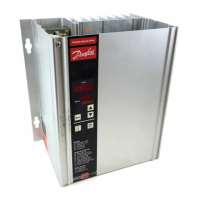
